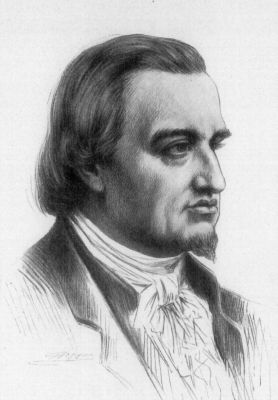
How did the Rothchild family start? They were able to start a banking house and install it in several different countries.
The Rothschilds are a family that are involved in international banking and finance, amongst a host of other occupations, one of which being the famous Bordeaux wine. At one point they were the richest and most influential banking family in the world. The family’s fortune is still over $400 billion, but it has been spread over more and more descendants with each new generation, somewhat diluting the power they once had.
So, how did the Rothschild family start? The Rothschild family began in 1577 with Isaak Elchanan, when he built a house with a red shield. Rothchild comes from the German Haus zum Roten Schild at Judengasse, (the house with the red shield in Judengasse). Judengasse was the Jewish ghetto in Frankfurt and people tended to mark their houses with colorful signs or symbols. Isaak Elchanan built the house with the red shield and all of his descendants started to use the name zum rothen Schild, which became Rothschild. No one knows what Isaac Elchanan did, but he filed a tax return in 1558 that claimed he had a fortune of 2,700 guilders, which is approximately $160,000 today.
For almost 200 years, the family didn’t make much of a mark. It was Mayer Amschel Rothschild, born in 1744, that put the family on the trajectory that has made them so powerful. The Rothschilds were a Jewish family and Mayer Rothschild’s father had set himself up as an antique dealer. Mayer Amschel Rothschild took over his father’s business and started to expand it. He began by dealing in rare coins and antiques. Through this business he managed to gain the patronage of Crown Prince Wilhelm of Hesse. Prince Wilhelm became King William IX, of Hesse-Cassel and he was extremely wealthy. William was said to be the richest monarch in Europe. Rothschild’s business flourished.
While dealing antiques, Rothschild would sometimes exchange currencies or offer credit and he slowly set himself up as a money changer and lender. A lot of Jewish people made their living as money lenders because the Catholic church forbade Catholics from charging interest on a loan. In the 13th century, Thomas Aquinas said that it was unjust to charge someone a fee for giving them money. This meant that Jewish people often filled the role of money lender and a lot of anti-Semitism could possibly be based on people who are unhappy to have to pay off debts.
Rothschild managed to make other connections through King William IX and Rothschild persuaded William to make him the court factor (also called court Jew), which meant that he took care of taxes and was solely responsible for the loans of the court. He was able to make a small fortune from the interests on these loans. However, the court factor was at the mercy of their patron. Because the court factor was always Jewish, there was a lot of prejudice and some courts simply decided not to pay their debts. The court factor could even be executed if they fell out of favor.
While working at the court of William IX, the French Revolution broke out. Many of the nobles in Europe were worrying about revolution spreading to their countries, but Rothschild saw it as a way to make money. Rothschild supplied arms and loans to the Austrian army and dealt with payments from the British Army to its mercenaries. He made himself very rich.
By the end of the 18th century, Rothchild was the main international banker for William IX but he knew that he couldn’t always be dependent on his patron. He wanted to make sure his new fortune and bank were safe. He decided to branch out and he sent his five sons to the five main European cities: London, Paris, Vienna, Naples, and Frankfurt. Each son went with about $2 million of today’s money to set up a bank in that country.
Luckily for the Rothschilds, Napoleon started to take over Europe in the early 19th century. This gave the Rothschilds two wonderful opportunities. The first was to be the main source of funds and lending for each country involved in the war. They were literally playing both sides and they won big time. The second opportunity was that William XI needed to hide his money from Napoleon and he hid it in the Rothschild company. This sudden influx of capital allowed them to invest and grow at a staggering rate.
Mayer Rothschild died in 1812, but his sons and their sons would continue to grow the company, buying up other companies. It wasn’t long after his death that the Rothschild fortune exceeded that of his patron William IX. The family fortune would keep growing for over a century and a half, but would slowly start to shrink as more and more descendants took a piece of the pie. And this is what I learned today.
Sources
https://en.wikipedia.org/wiki/Court_Jew
https://en.wikipedia.org/wiki/Mayer_Amschel_Rothschild
https://en.wikipedia.org/wiki/William_I,_Elector_of_Hesse
https://en.wikipedia.org/wiki/Amschel_Mayer_Rothschild
https://en.wikipedia.org/wiki/Rothschild_family
https://en.wikipedia.org/wiki/Usury
https://en.wikipedia.org/wiki/Money_changer
http://vanosnabrugge.org/docs/dutchmoney.htm
https://iisg.amsterdam/en/research/projects/hpw/calculate.php
https://www.snopes.com/fact-check/rothschild-family-wealth/
https://www.celebritynetworth.com/richest-businessmen/rothschild-family-net-worth/
https://www.investopedia.com/updates/history-rothschild-family/
